As Moscow Promises Peace Terms After POW Exchange, 250 Drones and Missiles Rain Death on Ukrainian Cities While Russian Forces Tighten Noose Around Kostyantynivka
Summary of the Day – May 24, 2025
In one of the largest aerial assaults of the war, Russia launched 250 drones and 14 ballistic missiles against Ukraine overnight, transforming Kyiv’s streets into infernos of burning buildings and shattered lives as 15 civilians sought medical care amid the chaos. This calculated terror came hours after 307 more Ukrainian prisoners returned home in the second phase of the historic exchange, their liberation contrasted by Moscow’s promise to deliver “peace terms” only after the final swap—terms that officials warn will demand nothing short of Ukraine’s complete surrender. As Russian forces expanded their salient southwest of Kostyantynivka, creating conditions for a potential summer offensive, Ukraine struck back at Russia’s war machine, hitting chemical plants and weapons facilities while Western allies prepared an 18th sanctions package that could disconnect 20 more Russian banks from SWIFT.
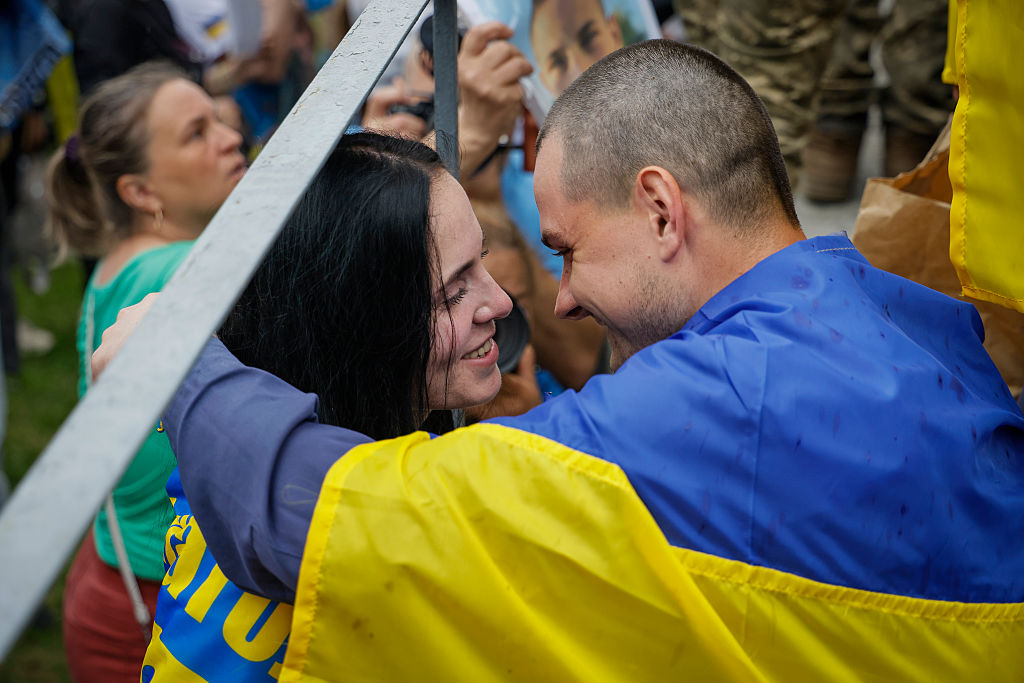
A Ukrainian servicemember, released from Russian captivity during the second phase of ‘1000-for-1000’ prisoner exchange, hugs his beloved in Chernihiv Oblast, Ukraine. (Maksym Kishka/Global Images Ukraine via Getty Images)
Night of 250 Drones: Russia Unleashes One of War’s Largest Combined Strikes
The statistics alone tell a story of unprecedented aerial terror: 250 Shahed and decoy drones, 14 Iskander-M ballistic missiles, launched from six different directions spanning Bryansk to occupied Crimea. Ukrainian air defenses shot down 128 drones and six missiles over Kyiv, while 117 drones were “lost in location”—military parlance for electronic warfare victories.
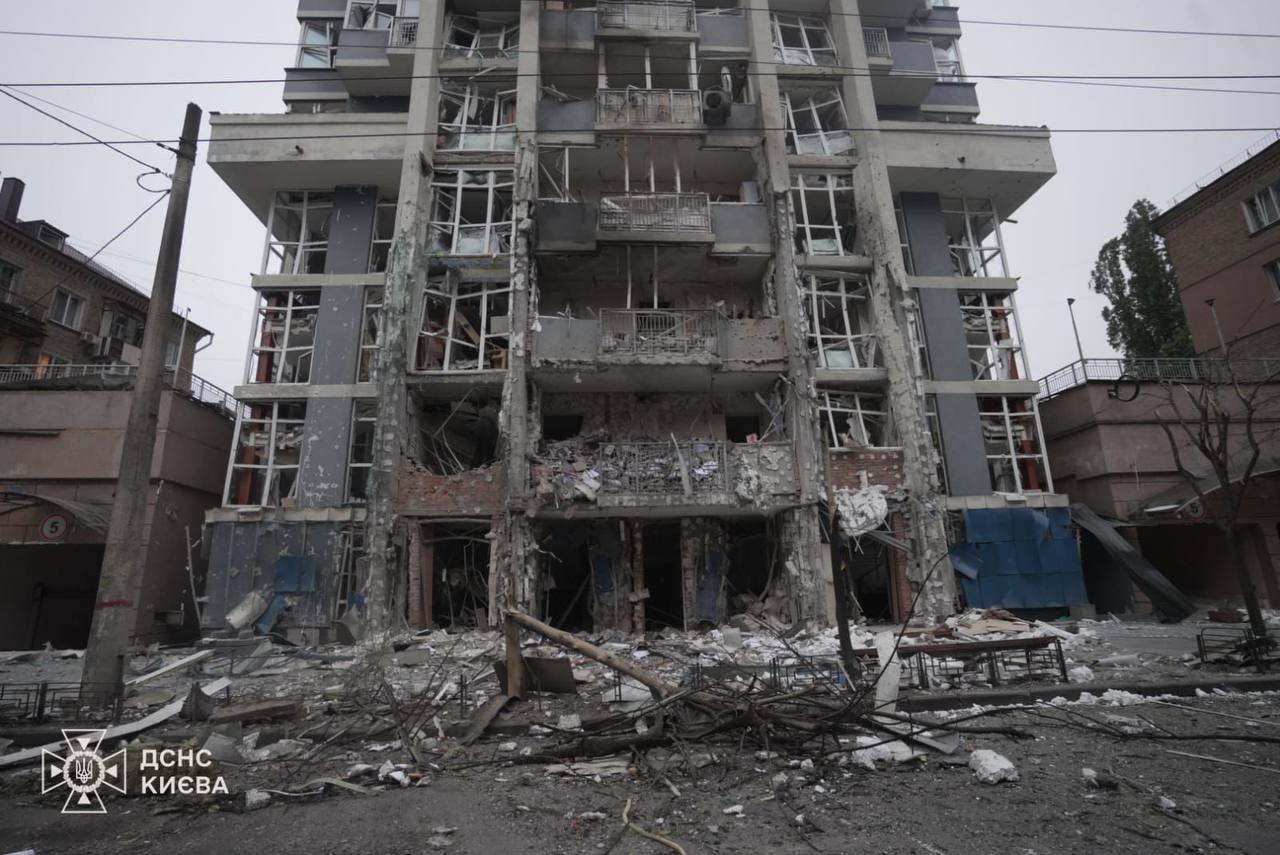
A building in Kyiv damaged by a Russian overnight attack. (State Emergency Service / Telegram)
Yet numbers cannot capture the human reality: residential buildings ablaze in Kyiv’s Obolonskyi district, where fire consumed balconies from the third to sixth floors. Five people requiring medical attention in Solomianskyi after a five-story building caught fire. The Blockbuster Mall’s roof torn open by drone fragments. Fifteen civilians injured across the capital, some with shrapnel wounds, others bearing the invisible scars of shock.
State Emergency Service shows the aftermath of Russia’s missile attack on Kyiv overnight on May 24, 2025. (State Emergency Service)
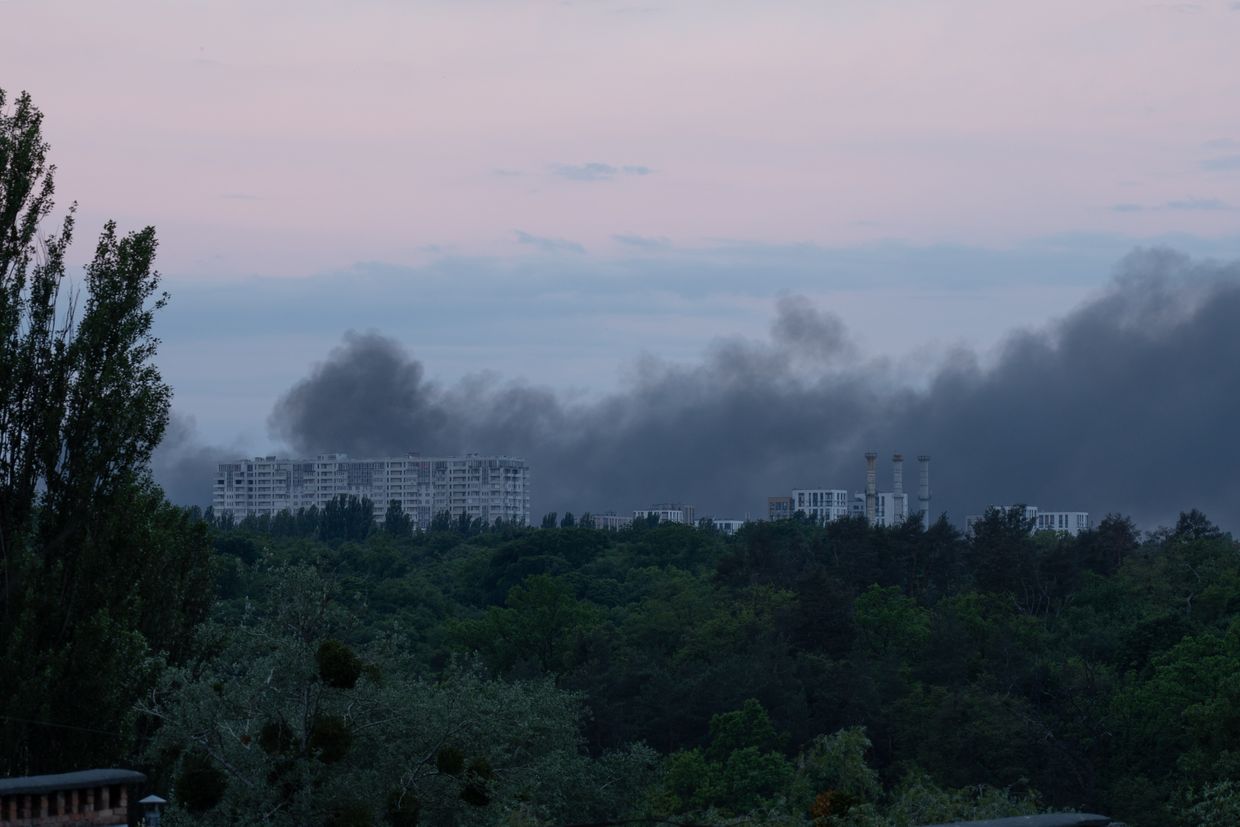
Russia launched a mass missile and drone attack against Ukraine, targeting several districts in Kyiv overnight. (Olena Zashko / Kyiv Independent)
“It’s terrorism,” said 22-year-old Mykyta Kruchan, whose parents’ apartment building was hit. “What Ukraine does—we shoot at their military buildings. But here, it’s not an adequate reply. All they do is on purpose.”
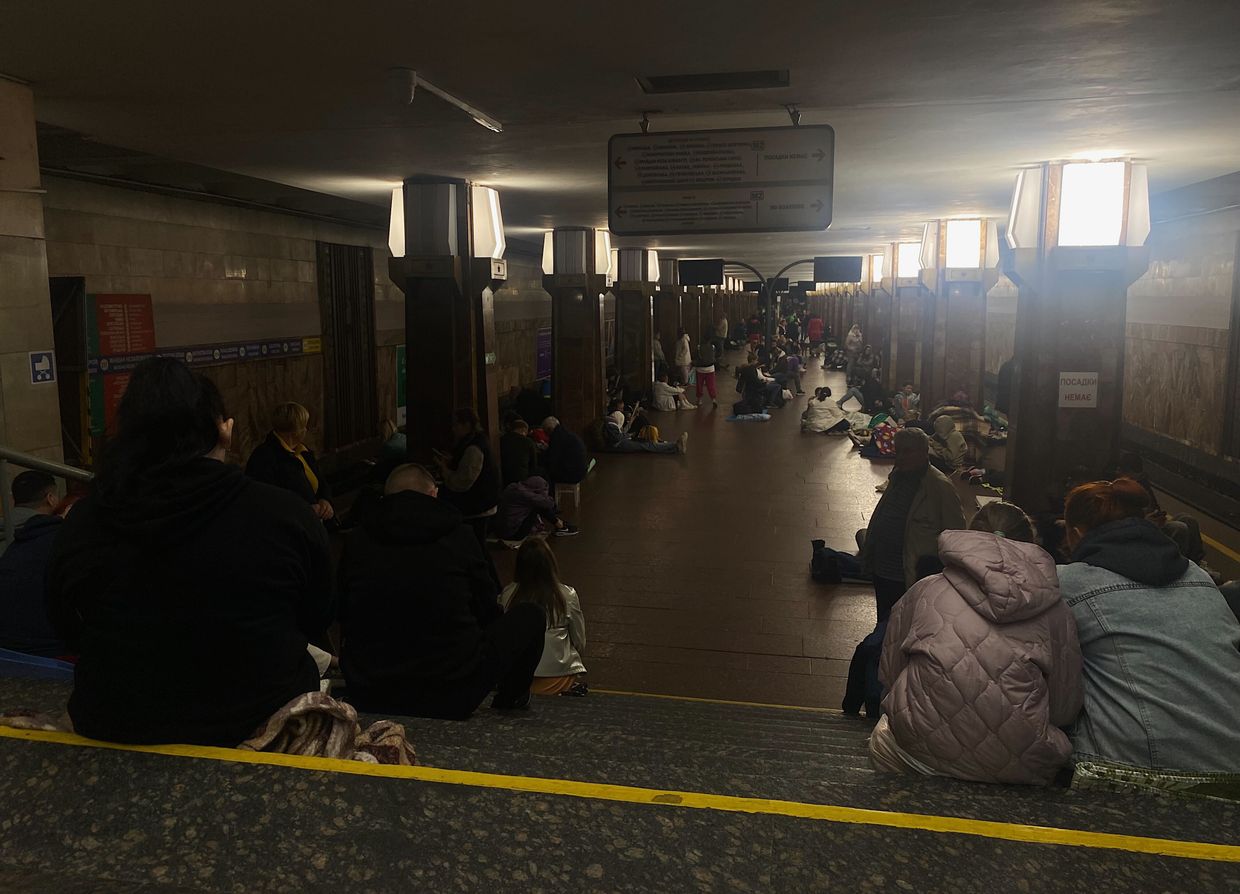
Kyiv residents shelter underground in the Metro for the second consecutive night of Russian attacks against the capital. (Kateryna Denisova / The Kyiv Independent)
307 More Souls Return: The Second Wave of Historic Exchange Brings Hope Amid Horror
As dawn broke over the exchange site, 307 more Ukrainian soldiers crossed into freedom—the second installment of the 1,000-for-1,000 swap. Among them: 27 defenders of Mariupol, veterans of battles across six oblasts, ranging in age from 25 to 61. For some units, this marked the first return of their soldiers from Russian captivity.
President Zelensky’s announcement carried both triumph and tragedy: “In just these two days, 697 people have been brought home. We expect the process to continue tomorrow.” Yet 7,303 more Ukrainians remain in Russian hands, each day in captivity another victory for Moscow’s strategy of human leverage.
The exchange’s timing—occurring as missiles rained on Ukrainian cities—sent a clear message about Russian intentions. Even as prisoners crossed borders toward freedom, their homeland burned under the largest drone assault in months.
“Nothing Short of Surrender”: Lavrov’s Promise of Peace Terms Rings Hollow
Foreign Minister Sergei Lavrov’s announcement that Russia would present its peace terms after the POW exchange completion carried an ominous undertone. Speaking to state media, Lavrov described a document outlining conditions for “sustainable, long-term, comprehensive agreement”—language that masks maximalist demands.
ISW’s assessment cuts through diplomatic euphemism: Russia’s conditions will likely amount to “nothing short of Ukraine’s full capitulation.” The Kremlin’s insistence on negotiating a “long-term settlement” without an active ceasefire reveals the strategy—force Ukraine into negotiations while bombs still fall, using military pressure to extract political concessions.
This approach explains the timing of the massive overnight strike. As diplomats speak of peace, missiles speak louder, each explosion a punctuation mark in Russia’s negotiating position.
The Kostyantynivka Convergence: Russian Forces Shape Summer’s Battlefield
Southwest of Kostyantynivka, Russian forces have methodically expanded their salient over recent weeks, advancing 14 kilometers at the closest point. Geolocated footage confirms Russian seizure of fields southeast of Popiv Yar, with the 150th Motorized Rifle Division spearheading advances north and south of Oleksandropil.
The strategic implications ripple across eastern Ukraine’s battlefield geometry. This salient creates three potential axes for summer operations: north toward Kostyantynivka along the T-0504 highway, supporting advances from Chasiv Yar and Toretsk, or northeast to envelop Pokrovsk and Myrnohrad.
Yet Russian forces face their own geometric challenge. Breaking out requires advances from three directions—Chasiv Yar’s contested streets, Toretsk’s drone-infested “gray zones,” and the fields west of Pokrovsk. ISW assesses Russia lacks sufficient resources to pursue both Kostyantynivka and Pokrovsk simultaneously, forcing a strategic choice that will define summer’s battles.
Missile Evolution: Russia’s Ballistic Arsenal Grows More Elusive
Ukrainian Air Force spokesperson Yurii Ihnat revealed a troubling development: Russian Iskander-M missiles now employ radar decoys and quasi-ballistic flight paths, performing evasive maneuvers that complicate Patriot system calculations. “It complicates interception, but doesn’t make it impossible,” Ihnat stated, noting that two-thirds of missiles were still intercepted.
This technical evolution reflects broader trends in Russia’s strike campaign. Cruise missile usage has dramatically decreased—from 60 on April 24 to near-zero in recent strikes. Instead, Russia relies on massive drone swarms to overwhelm defenses while using limited ballistic missiles for precision strikes, possibly conserving fixed-wing aircraft that launch cruise missiles.
Strike and Counterstrike: Ukraine Targets Russia’s Chemical and Weapons Plants
Ukrainian drones struck two critical facilities overnight: the Azot chemical plant in Novomoskovsk, Tula Oblast—one of Russia’s largest producers of ammonium nitrate and methanol—and the Energiya facility in Yelets, Lipetsk Oblast, hit for the second consecutive night. The Energiya plant manufactures batteries for glide bomb correction modules and missile components, making it irreplaceable for Russia’s precision strike capabilities.
Smoke rose from both facilities as local governors downplayed damage. Tula’s governor claimed only an “acid container” was affected with no air contamination, while Lipetsk’s governor reported drone debris in an “industrial zone.” Yet the strategic targeting reveals Ukraine’s evolving precision—striking nodes in Russia’s war production that cannot be easily replaced.
Finland’s Airspace Violated as Russia Tests NATO’s Northern Flank
Two Russian military aircraft suspected of violating Finnish airspace on May 24 prompted Defense Minister Antti Hakkanen to declare: “We take the suspected territorial violation seriously.” The incident, under investigation by Finnish border guards, fits Russia’s pattern of provocations along NATO’s eastern flank.
This violation comes as Finland completes 35 kilometers of a planned 200-kilometer border fence and prepares for post-war Russian military buildup. Major General Sami Nurmi’s warning that Russia has begun “moderate preparations” for border infrastructure takes on new urgency with each airspace incursion.
Poland experienced its own provocation on May 22 when fighters intercepted a Russian Su-24 bomber over the Baltic Sea after “dangerous maneuvers.” Defense Minister Wladyslaw Kosiniak-Kamysz called the actions “intentional,” highlighting how Russia uses aviation to probe NATO responses while maintaining plausible deniability.
EU Prepares Financial Guillotine: 20 Russian Banks Face SWIFT Disconnection
The European Union’s 18th sanctions package, under discussion following the May 20 adoption of the 17th round, could sever 20 more Russian banks from SWIFT while lowering the oil price cap from $60 to $45 per barrel. Additional measures include banning the defunct Nord Stream pipelines and imposing €2.5 billion in new trade restrictions.
The proposals face a critical test: unanimous approval from 27 member states, including sanctions-skeptical Hungary. More significantly, oil price cap changes require U.S. support—problematic given Trump’s reported refusal to impose new sanctions, citing future business opportunities with Moscow.
Germany has already signaled support for the Nord Stream ban, with spokesperson Stefan Cornelius confirming EU-U.S. coordination. Yet the gap between European ambition and American reluctance grows wider with each sanctions round.
“Vernacular Hardcore”: Ukraine’s Venice Biennale Entry Weaves War and Memory
At the 19th International Architecture Exhibition in Venice, Ukraine’s pavilion presents “Vernacular Hardcore”—a meditation on destruction and reconstruction through traditional reed roofing. Curator Bogdana Kosmina’s installation draws from her grandmother Tamara’s 1960s architectural survey of Ukrainian villages, preserved through digital archiving as missiles fell on Kyiv.
The exhibition connects past and present through the work of Livyj Bereh, volunteers who’ve repaired 400 roofs across five oblasts. Co-founder Kseniia Kalmus, who pivoted to drone-building after Russia’s renewed Kharkiv offensive made reconstruction too dangerous, embodies the project’s evolution: “This is not rebuilding after destruction. It is protection before destruction.”
An apocryphal story circulates: a Russian missile penetrating a traditional reed roof failed to detonate, the flexible material absorbing impact that would have triggered explosion on concrete. Later removed and detonated safely, the missile became metaphor for vernacular resilience.
Poland’s Presidential Debate: Ukraine Becomes Electoral Battleground
Warsaw Mayor Rafal Trzaskowski and historian Karol Nawrocki clashed over Ukraine policy in their final debate before Poland’s June 1 presidential runoff. Nawrocki, backed by the opposition PiS party, claimed Zelensky “treats Poland badly” and defended his pledge to block Ukraine’s NATO accession.
“You’re using Putin’s language,” Trzaskowski shot back, highlighting how Nawrocki’s stance echoes Kremlin talking points. The conservative candidate’s eight-point declaration, designed to win far-right support, includes NATO opposition that directly aligns with Moscow’s key demands.
With Poland’s presidency holding veto power over parliamentary decisions, the election’s outcome will shape not just domestic reforms but Warsaw’s stance on Ukraine’s Euro-Atlantic integration.
Intelligence Tally: Over 150 Ukrainian POWs Executed by Russian Forces
Ukraine’s military intelligence (HUR) documented more than 150 cases of Ukrainian soldiers summarily executed after surrendering—a figure representing only confirmed cases. The announcement, timed with the massive POW exchange, underscores the bitter irony: as hundreds return alive, evidence mounts of those who never got that chance.
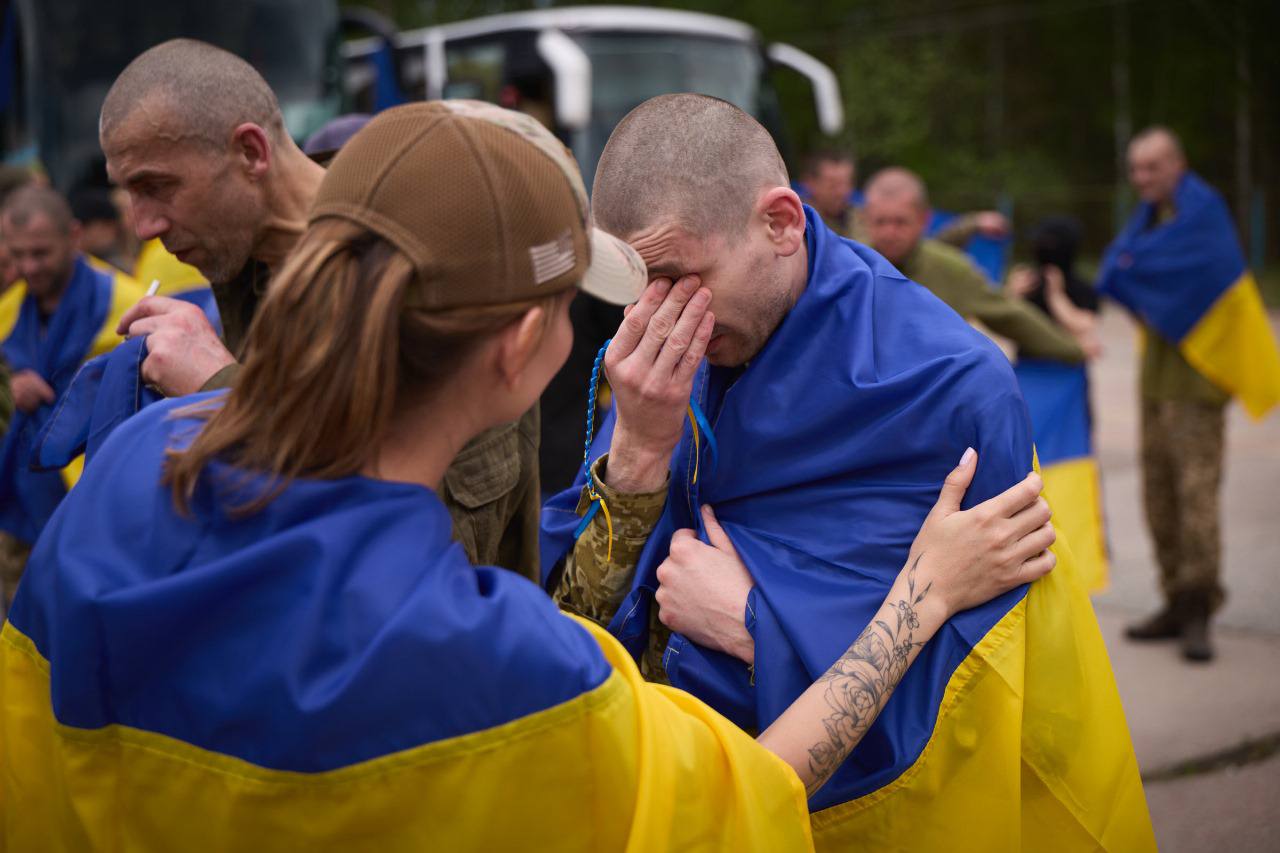
Ukrainian soldiers after their release from Russian captivity (President Volodymyr Zelensky/Telegram)
UN findings support this grim accounting. The Independent International Commission reported Russian deserters describing orders to “shoot them on the spot” rather than take prisoners. Since August 2024 alone, 79 executions across 24 incidents have been documented, some involving group killings of wounded or unarmed soldiers.
Mass Attack Claims Multiple Lives as Russia Targets Civilian Infrastructure
The overnight assault’s human toll mounted through the day: 13 civilians killed across Ukraine in the past 24 hours, 51 requiring medical attention. In Kyiv Oblast, three died when first responders found bodies while extinguishing fires in Obukhiv and Bucha districts. Two children were among 10 injured in the region.
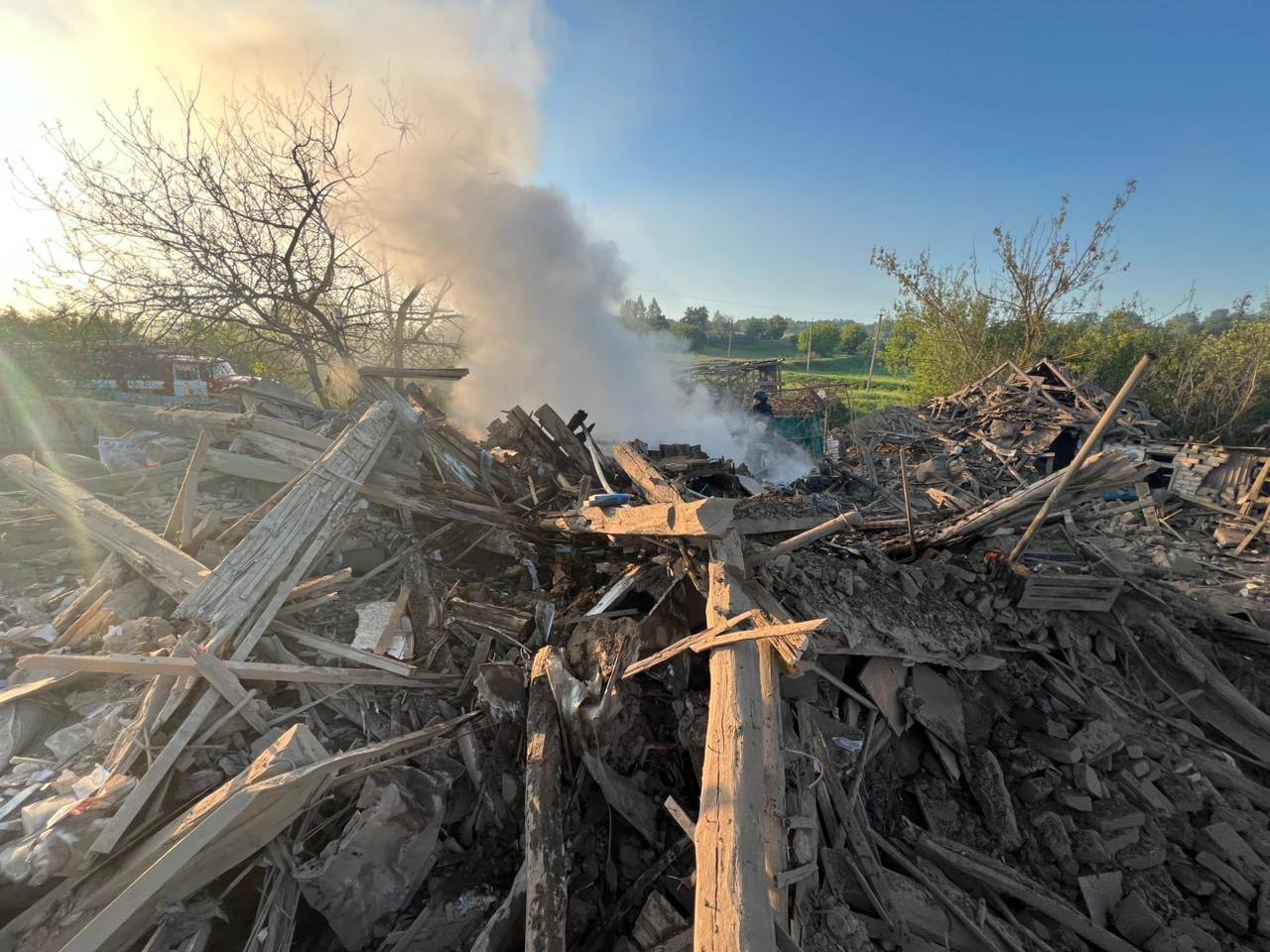
The aftermath of Russian attacks against Kharkiv Oblast, Ukraine. (Governor Oleh Syniehubov/Telegram)
In Donetsk Oblast, four died including two in Kostiantynivka. Kharkiv Oblast lost four civilians with seven injured. Kherson Oblast reported two dead, 13 injured. An Odesa port strike killed one immediately; two more died later in hospital from their injuries.
Each casualty represents a family shattered, a community wounded. As emergency services worked through debris, the numbers accumulated—not statistics but lives ended by calculated terror.
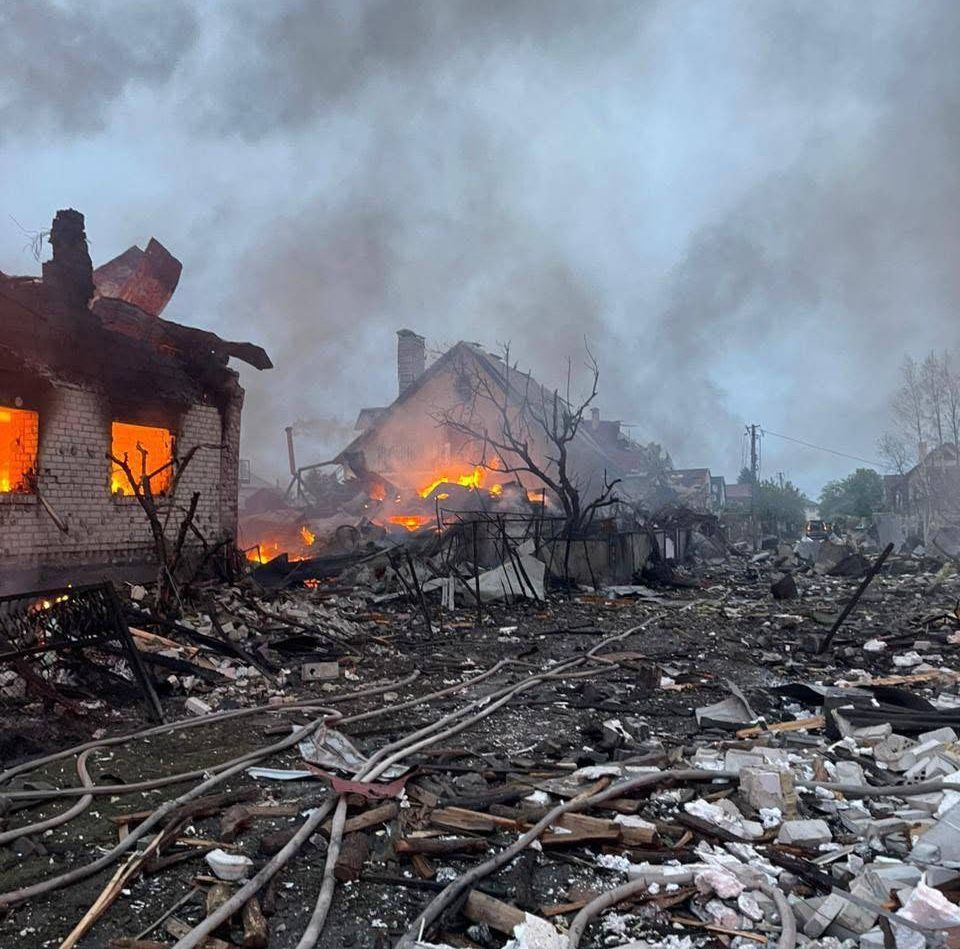
The aftermath of a Russian aerial attack against Kyiv Oblast. (Mykola Kalashnyk / Telegram)
Arson Attacks on UK Prime Minister’s Property May Have Russian Links
British security officials are investigating potential Russian involvement in arson attacks on properties linked to Prime Minister Keir Starmer, including his family home in north London. Three suspects—two Ukrainian nationals and one Romanian—face conspiracy charges, with investigators examining whether Russian actors recruited them.
The investigation reflects broader concerns about Russian sabotage operations across Europe. Similar incidents in Germany and Poland involved Ukrainian nationals allegedly conducting arson attacks on Russian orders, highlighting Moscow’s strategy of using foreign nationals to create plausible deniability while destabilizing Ukraine’s allies.
Washington Post: Russia’s Military Advantage “Declining” Despite Territorial Gains
Senior U.S., European, and Ukrainian officials told the Washington Post that Russia faces critical weapons and manpower shortages, with tank arsenals likely exhausted within months. “Russia is very gradually taking bits of territory still, but at an unsustainably high cost,” said Richard Barrons, former head of UK Joint Forces Command.
A Ukrainian security official noted Russia cannot gain significant ground despite three-to-one personnel superiority, partly due to Ukraine’s Kursk operation diverting resources. Yet this assessment comes as Trump backs away from sanctions, appearing “increasingly unwilling to challenge Putin” despite optimal conditions for pressure.
Looking Ahead: The Geometry of Summer Warfare
As May 24 drew to a close, the day’s events revealed the war’s evolving geometry—both physical and political. Russia’s massive aerial assault, timed with prisoner exchanges and peace term promises, demonstrates Moscow’s strategy of negotiating through terror. The expanding salient near Kostyantynivka creates new battlefield equations that will define summer’s fighting.
Ukraine’s strikes on Russian weapons production, the EU’s sanctions preparations, and Finland’s airspace violations all represent moves in a larger game where military and diplomatic chess boards overlap. As 307 more prisoners taste freedom and 15 Kyiv residents nurse wounds from drone strikes, the fundamental question remains: Can pressure—military, economic, diplomatic—change Putin’s calculus, or will the architecture of terror continue to define this war’s terrible logic?
The Venice Biennale’s meditation on vernacular survival offers perhaps the day’s most profound metaphor: traditional materials absorbing impacts that would shatter concrete, flexibility proving stronger than rigidity. As Ukraine faces another summer of war, that lesson—survival through adaptation, resistance through resilience—may prove more valuable than any Western weapon system or sanctions package.
